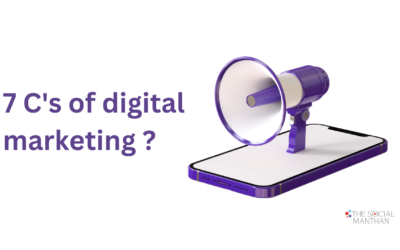In the world of digital marketing, content is king. But not all content is created equal. To truly make an impact, your content must do more than just exist—it must engage your audience, drive traffic to your website, and ultimately convert visitors into customers. But how do you create content that achieves all this? Here’s a step-by-step guide to crafting content that not only captures attention but also turns that attention into tangible results.
1. Understand Your Audience
The foundation of any successful content strategy is a deep understanding of your target audience. You need to know who they are, what they care about, and how they consume content.
Why It Matters:
- Tailoring content to your audience’s interests and pain points ensures relevance and increases the likelihood of engagement.
- Understanding your audience’s preferred content formats (e.g., blogs, videos, infographics) helps you deliver content in the most effective way.
Action Steps:
- Create Buyer Personas: Develop detailed profiles of your ideal customers, including demographics, interests, challenges, and behaviors.
- Conduct Surveys: Ask your existing customers what type of content they find most valuable and where they prefer to consume it.
- Analyze Competitors: Look at what’s working for your competitors to gain insights into what your audience might be looking for.
2. Craft Compelling Headlines
Your headline is the first thing potential readers will see, and it often determines whether they click on your content or scroll past it. A compelling headline grabs attention and entices the reader to learn more.
Why It Matters:
- A strong headline can increase your content’s click-through rate (CTR) significantly.
- It sets the tone for your content and provides a clear indication of what the reader can expect.
Action Steps:
- Use Numbers: Headlines with numbers (e.g., “7 Ways to…”) often perform better as they promise specific, actionable information.
- Incorporate Power Words: Words like “Ultimate,” “Proven,” and “Essential” can add urgency and intrigue.
- Keep It Clear: Ensure your headline clearly communicates the benefit or value of the content.
3. Focus on Value-Driven Content
Every piece of content you create should provide value to your audience. This means addressing their pain points, answering their questions, or providing insights that they can’t find elsewhere.
Why It Matters:
- Value-driven content builds trust and positions your brand as an authority in your industry.
- High-value content is more likely to be shared, increasing your reach and driving more traffic.
Action Steps:
- Solve Problems: Focus on creating content that solves specific problems your audience faces.
- Offer Unique Insights: Share your expertise, case studies, or unique perspectives that set your content apart from others.
- Provide Actionable Tips: Ensure your audience can apply what they learn directly from your content.
4. Incorporate Visual Elements
Visual elements such as images, infographics, videos, and charts can make your content more engaging and easier to digest. They also help break up text and maintain the reader’s interest.
Why It Matters:
- Visuals can significantly increase engagement, as people are naturally drawn to images and videos.
- Content with relevant images gets 94% more views than content without visuals.
Action Steps:
- Use High-Quality Images: Ensure all images are relevant, high-resolution, and align with your brand’s aesthetic.
- Create Infographics: Infographics are a great way to present complex information in a visually appealing and easy-to-understand format.
- Embed Videos: Videos can enhance understanding and retention, making your content more impactful.
5. Optimize for SEO
To drive traffic, your content needs to be easily discoverable. This is where Search Engine Optimization (SEO) comes into play. By optimizing your content for search engines, you increase its chances of appearing in search results.
Why It Matters:
- SEO helps drive organic traffic to your website, reducing your reliance on paid advertising.
- Well-optimized content can rank higher on search engines, leading to more visibility and clicks.
Action Steps:
- Keyword Research: Identify the keywords and phrases your audience is searching for and naturally incorporate them into your content.
- On-Page SEO: Optimize your title tags, meta descriptions, headers, and image alt texts with relevant keywords.
- Internal and External Links: Link to other relevant content on your site (internal links) and to high-authority external sources to boost credibility and SEO.
6. Include Strong Calls to Action (CTAs)
Your content should not just inform or entertain; it should guide your readers towards taking a specific action. This is where a strong Call to Action (CTA) becomes essential.
Why It Matters:
- CTAs drive conversions by encouraging your audience to take the next step, whether it’s subscribing to a newsletter, downloading a resource, or making a purchase.
- Without a clear CTA, your audience may not know what to do next, resulting in lost opportunities.
Action Steps:
- Be Clear and Direct: Use action-oriented language (e.g., “Download Now,” “Sign Up Today”) that tells the reader exactly what to do.
- Highlight the Benefit: Explain what the reader will gain by taking the desired action.
- Place CTAs Strategically: Include CTAs at multiple points in your content, especially at the beginning, middle, and end.
7. Analyze and Refine Your Content
Creating engaging content is an ongoing process that requires constant analysis and refinement. Regularly reviewing your content’s performance helps you understand what’s working and what needs improvement.
Why It Matters:
- Continuous improvement ensures your content remains relevant, effective, and aligned with your audience’s needs.
- Analyzing performance helps you identify successful strategies that can be replicated across other content.
Action Steps:
- Use Analytics Tools: Track metrics such as page views, bounce rates, time on page, and conversion rates using tools like Google Analytics.
- A/B Testing: Experiment with different headlines, CTAs, and content formats to see what resonates most with your audience.
- Gather Feedback: Encourage readers to leave comments or participate in surveys to gain direct insights into their preferences.
Conclusion
Creating engaging content that drives traffic and conversions is both an art and a science. By understanding your audience, crafting compelling headlines, providing value, incorporating visuals, optimizing for SEO, using strong CTAs, and continuously refining your approach, you can create content that not only attracts visitors but also converts them into loyal customers.
Remember, content that engages and converts is content that resonates. Keep your audience at the heart of everything you create, and success will follow.








